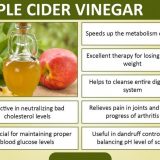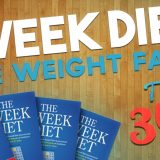Health and Fitness, Weight Loss
There is a misconception among many people that if you are vegetarian then you are already eating healthily. Vegetarians may also be overweight and, at the same time have nutritional deficiencies. Here, we create a plan with simple recipes to help lose weight while covering all the necessities and avoiding the hunger. Even if you are not a vegetarian, this menu plan will give you an alternative to your diet if you just want to eat more vegetables or you are transitioning.
If you need to follow a certain diet for health reasons please consult a nutritionist to advise you on the changes to be made to recover your health.
Many people are often shocked when they find out that someone is vegetarian and they see them quite overweight. Why is this so? This is because they choose unhealthy food despite making the bulk of their diet to be primarily vegetables. Many foods stimulate the appetite (for example, refined flours and visible and hidden sugars) or are not appropriate to maintain a healthy weight.
So, if you choose to be a vegetarian or just want to be healthier by eating more fruits and vegetables it will be a matter of choosing recipes and preparations that will give you good health, avoid weight gain, and give you the satiation necessary.
Below is a balanced and healthy weekly plan to lose weight without sacrifices. To facilitate the follow up of the plan, you can find the recipes of each of the dishes in the links to my website.
Breakfast and snacks
-1 glass of skim milk.
-2 slices of whole wheat bread
-part-skim ricotta cheese, 1 tablespoon.
Entres: (choose two options)
-1 hard-boiled egg.
-1 handful of dried fruits (when included in some preparation, do not include them).
-8 olives.
-1 non-ripe banana (medium).
-10 large grapes.
-1 small portion of thin compact cheese (30 g): 2 times per week.
-1 fresh fruit.
Lunch and dinner: quantities of food per item
-Raw and/or steamed vegetables: 1 dish.
-Paw paw, sweet potato, corn, burgol wheat, quinoa or buckwheat, millet, wholemeal rice, other whole grains, legumes (lentils, chickpeas, beans, soybeans)
-1 cup gluten-free pasta, cooked al dente: 1 medium dish (already cooked).
-Miso 1 cup.
-Oil 1 teaspoon. Try not to go over. Invest in non-stick cookware to minimize oil usage.
-Avoid or decrease the salt.
-Fresh Fruit: 1 piece after each meal. 1 citrus or 1 apple
-Condiments – All the necessary condiments and spices to enhance the flavor: pepper, cayenne pepper, nutmeg, cumin, clove, basil, chopped garlic, etc.
Weekly Menu
Day 1
Lunch: Risotto with mushrooms, you can add some vegetables.
Dinner: Raw salad of your choice and/or steamed, add green leaves.
Day 2
Lunch: Buckwheat paella and vegetables. Incorporate green vegetables.
Dinner: Millet with dried fruit. Salad of all vegetables you like raw and/or steamed.
Day 3
Lunch: Broccoli omelet. Salad of all raw and/or steamed vegetables. Add legumes.
Dinner: Curried vegetarian meatballs with or without cheese. Salad of all raw and/or steamed vegetables.
Day 4
Lunch: Vegetarian macaroni and bolognese. Salad of all raw and/or steamed vegetables.
Dinner: Avocado and walnuts salad. Add whole grains or sweet potato and soy.
Day 5
Lunch: Potato omelet and spinach. Salad of all raw and/or steamed vegetables.
Dinner: Salad of various vegetables preferably raw and/or steamed. 2 servings of basic pizza stuffed with vegetables, soy, corn, peas, egg, cheese, and olives.
Day 6
Lunch: Mushrooms stuffed with burgol wheat. Salad of all raw and/or steamed vegetables.
Dinner: Salad of all the vegetables you like raw and/or steamed. Add Chickpea salad.
Day 7
Lunch: Green salad. 2 spinach and ricotta empanadas.
Dinner: Pickled eggplant. Salad of all the vegetables you like raw and/or steamed with quinoa.
Recommendations to cover all nutritional needs
-A vegetarian diet will be healthy as long as the nutrients are planned and combined and adequately covered.
-Proteins: We cover ingesting varied foods, which provide the amino acids and nitrogen necessary to not fall into the consumption of nutritional supplements.
-Vegetarians should be advised by a nutritionist, who will have to control the amount of protein provided in food from plant foods, as their needs are greater because of consuming less digestible proteins like some cereals and legumes.
-Iron: Vegetables contain non-heme (less absorbance) iron, which is more sensitive than heme iron (from animal-derived foods) to iron inhibitors and enhancers.
-Vitamin C and other organic acids present in fruits and vegetables help to absorb iron.
-The amount of iron from the vegetables is 1.8 times less than that derived from foods rich in iron heme of animal origin.
-Some researchers argue that vitamin C helps to absorb iron as long as it includes high intake of this vitamin. The same for organic acids from fruits and vegetables. The greatest intake of vitamin C and fruits and vegetables (raw) can favor the absorption of iron.
-Other fermentation processes, to make derivatives of soy (miso and tempeh), can help the absorption of iron.
-It is clearer that when a person is accustomed to following a vegetarian diet is more adapted to low iron intake, and therefore, in the long term, there will be a growing absorption and consequently lower losses.
-For some vegetarians, depending on the food plan they follow, the iron needs will be higher or lower than for others. Hence the importance of the advice of a nutritionist.











